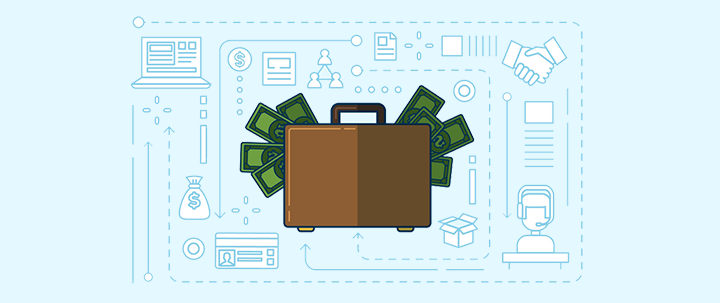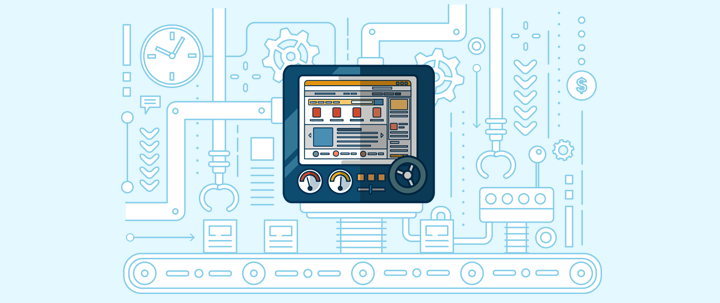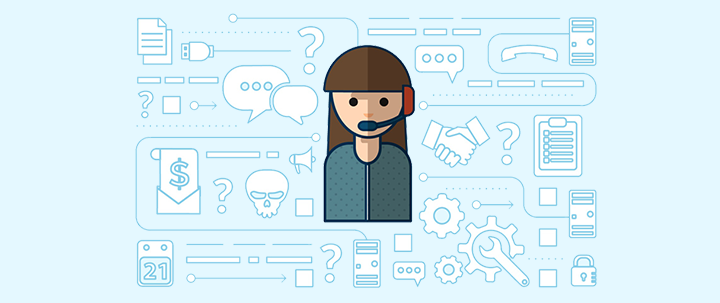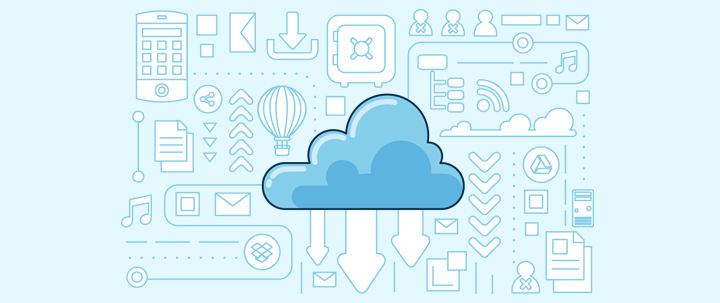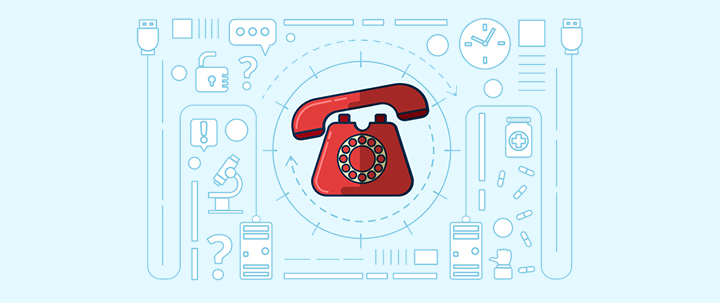Our series on "Understanding the Transition from Break-Fix to MSP"
Chapter One: Why You Should Probably Consider Switching from Break-Fix to MSPChapter Four: How to Convince Your Client Managed Services Pricing is Best
So it has come the day that you are truly considering making the switch to being a full time MSP. If you have followed the full series of articles, you started with a dash of curiosity in chapter one and learned about why MSP beats Break-Fix, intrigued, you took a second step towards learning if the MSP business model was right for you in chapter two.
Now -- a third step has been taken in chapter three. You’re not fully convinced, but you are curious enough to investigate. You might be thinking;
“Well… if I were to make the switch to MSP… hypothetically of course.... what would it take?”
Today, we tackle that question: How to Make the Switch from Break-Fix to MSP.
In the third chapter of our series, we’ll quell uncertainty and clarify in explicit detail what it will take to go from break-fix business hell to the systematic and certain design of MSP.

Business Plan Fundamentals

STEP ONE: START WHERE THE ROAD BEGINS
The first thing you’ll want to do is determine and segment the various groups of customers you plan to target as an MSP and what the needs will be of these people.
Most likely, your approach is going to be to have continued work with those who you already service and also the acquisition of new customers.
Outline who these people are and what services are needed to support their systems. With the segments and known needs, you will have to pick how you would ideally sell these services to these people you want to service.
If you are struggling to figure out good ways to approach this, these are the five most common models for MSPs being used today. You can do one model, or mix and match. Although, we generally recommend picking one.
Which is right for your customers?
1. Monitoring only: Provides network monitoring and alerting services by the MSP
2. Per device: Flat fee for each type of device that is supported in a customer environment. For example; $49 per desktop, $199 per server, $19 per network printer and $89 per managed network.
3. Per user: Per end user per month and covers support for all devices used by each end user.
4. Tiered (most common): Build several bundled packages of services with each increasingly more expensive package providing more services to the customer.
5. All you can eat: Extremely flexible and includes all remote support, on-site support and lab or bench time for an entire organization for a flat fee per month.
Moving forward, just for convenience sake, we will speak as if you are using the tiered business model. But in general, all information below is relevant and applicable no matter what you choose.


STEP TWO: PICK YOUR TOOLS, HAMMER
Once you have segmented your audience and their needs, you need to determine what it will take on your end to deliver those services.
So how do you do that?
It’s a personal project, but, we are here to help.
Below we have gathered a list of the top MSP service offerings of 2017. Use this as inspiration. It is what your counterparts seem to think are solving problems. Remember, these are offerings you should only adopt to solve a problem that your client or a potential client has. Learning all of these tools doesn’t make you a good MSP.
It makes you unfocused.
The top MSP offerings of as of today:

Monitoring

Help Desk

Network/System Management

Security

Storage

Backup

Disaster Recovery

Remote Monitoring Mgt (RMM)

Managed Storage

Managed Hosting

Managed Security

Managed Print

Managed Communication
Take your pick, ladies.
When choosing your potential solutions, pick only what you need and consider all of the ways learning this solution will affect your business. To help with this, ask yourself questions like;

How much time will it take one employee to service one client using this software?

How much storage space will this take up?

How much time and effort does this require to maintain even if no one is using it?

What other physical, mental and financial considerations are there for each tool?
It’s absolutely critical that in this phase you consider all factors.
By the end of step two, you should know your segments, their pains, the tools that solve their pains and all ways those tools will affect your business.


STEP THREE: SHOW ME YOUR PACKAGE(S)
The third step of transitioning to the MSP business model will be to outline the packages you hope to offer and what is included in them. So based on the first step and second step, you have the general idea of who you are looking to service, what their pains are, and what tools will take to solve those pains.
This is good. But now it’s time to get official.
When mapping customers you will likely have two or three main customer segments of of similar clients and then a few outliers. When making the new ‘hypothetical’ packages for your business, we recommend you consider firing customers who are not within one of those packages.
The whole idea of MSP is working smarter, not harder. It’s your business. But give this serious consideration. Creating special packages is an easy way to weigh down your processes. Making new packages for each client will create uneven pricing and in general it’ll actually prove to be more difficult than beneficial. But you probably already know this.
Considering you have made a decision on the outliers, outline the specifics on your packages.

What to remember when making customer packages.

Approach pools of customer segments

Evaluate services needed for customer segments

Evaluate resources needed to run operations

Decide on a pricing model for the use of your resources

Put a name on it (literally name the package)
That’s really it for the packages. The key is just making it official and bundling the specifics together with a nice bow. Once you have the packages it is real. You are basically an MSP.
You just need someone to give you money. That’s what we will look at next. Pricing your package, understanding costs and new economics of your business.


STEP FOUR: CRUNCHING THE DOLLARS (COSTS)
This stuff is easy, right? If you are like me, I am sure you are starting to see how this thing can become an MSP business.
What you want to do now is to measure out the costs of your packages.
“Understanding your own costs is essential. Start with technology costs. From there, look at costs associated with particular clients—number of users, amount of data, number of servers. Then, factor in hourly costs for supporting each client.”
Jordi Tejero, Owner of CRS Technology Consultants
Here is what we recommend when it comes to measuring costs:
First thing is first, of course, you need to outline the costs it will take to set up your base operations, aka, your fixed costs for those familiar with accounting. This is what Jordi is talking about above when he says technology costs.
Technology costs - Licenses, new service costs, channel partners, PSA, RMM. Second, you need to review the costs you will incur providing the services to your clients, aka, the variable costs for those familiar with accounting. We talked about this above, but this is a good time to touch on this subject again.
Package Specifics - Users, data, number of devices, number of servers
Operations costs - Employee time, employee resources, user-specific tools
Be sure to consider server space, back-ups, hardware and even small parts like cables and associated items are not significant in the grand scale of things, but it’s important to account for them. It’s hard to make predictions on the costs of these, but acknowledging them and making an effort to work them into your business model is a great start.
And if you ask us, always aim high for things you are unsure about.
Our next step is going to be the full economics of your business, this will be making projections on how many customers you need to break even, and profit benchmarks. To do this accurately, you need to account for all potential costs first, obviously.


STEP FIVE: SHOW ME THE MONEY, HONEY
(BUSINESS ECONOMICS)
We have done a lot here. But now is not the time to slow-down! You are basically at the finish line. It’s time to run the economics.
Running the Economics
First, what you want to do here is write down and recognize your final costs. Costs should be displayed in two segments. Fixed costs and variable costs.
Second, determine how much money you want to make.
Consider how much you want to make off of each customer. Getting to that number will simply be the margin between your total costs and what you charge per package. You could do a small margin or large margin. It depends on which business you want to be.
Third, this is really an extension of the previous step. To truly build a business that achieves a targeted profit margin you’re going to need to consider a few things.
Take a look at these factors.

All costs per package + Profit Margin = Revenue

Average Service Package Cost + Selling price = Avg. Revenue per Customer

Expected Customers per Package

Expected Monthly Profit = # of Customers x Avg. Revenue per Customer - Average Cost per Customer
We don’t mean to be insulting with the basic math, just a friendly reminder into what to approach!
Lots of numbers and lots of hypotheticals in this situation. Have fun. That is really it for the economics.


STEP SIX: DOIN’ THE DAMN THING
Up until now, you have mapped out your segments, your tools, your costs, your profits, your economics and now we are mapping out how to do the damn thing.
Let’s put it all together.
FIRST:
As a service organization, you are taking people’s money and claiming to monitoring their stuff. As you can imagine, you’re gonna need a contract promising certain work. These are called SLAs. I always think of the barbecue food, but not that kind of SLA.
SLAs stands for service level agreement. It is basically a contract of what you’re gonna do. You’ve probably made these before. Sometimes it helps to have a lawyer make it. You don’t need a lawyer, though. If you really want to use one, Reddit has been an awesome resource. Check out this thread specifically. Lots of info, lawyers and so forth. You can also use Reddit for SLA templates.
SECOND:
The dynamics of your business has changed. You might need to switch up some of your internal operations. This is the time you actually do it. You’ve likely mapped this out. But for reference, this will be new forms of internal communication like stack or an updated client stack, new network equipment, new backups, new marketing material, updating the website and so on.
THIRD:
You should spec out the RMM Software you’ll utilize and whether you’ll need professional services automation.
FOURTH:
A checklist of tools you’ll probably need here.
1. RMM: tools are designed to monitor your clients’ IT systems and report on performance.
2. PSA: designed to automate management of client projects
3. Accounting software: that can easily integrate with a PSA software: Quickbooks Online or Freshbooks are both great choices.
3. Virtual Phone System: A product like Grasshopper is ideal.
4. Email Marketing: Mailchimp is a great choice.
5. Team messaging: Slack is the leader.
6. Optional: An MSP marketing agency. Some say it did wonders for them, some say it didn’t. It’s your call.


STEP SEVEN: ONE LAST THING
You are basically an MSP here. It’s basically done. You’ve done it all. Congrats. You just need to let your customers know. Can’t forget about those guys. We will really dive in super deep on this step on the next, last, and final piece of this series. But we’ll touch on it here ever so briefly.
To notify your clients you’re making the switch create a plan for outreach. Prepare for rebuttals and hesitation from customers. Most people are going to view this as spending more money. You have got the responsibility of describing the exact same benefits that you just recently read about in part one of this series.
We will dive in deep on this in the next section.
This was Chapter Three in our series on Understanding the Transition from Break-Fix to MSP. For Chapter Four, see below.
Our series on "Understanding the Transition from Break-Fix to MSP"
Chapter One: Why You Should Probably Consider Switching from Break-Fix to MSPChapter Four: How to Convince Your Client Managed Services Pricing is Best

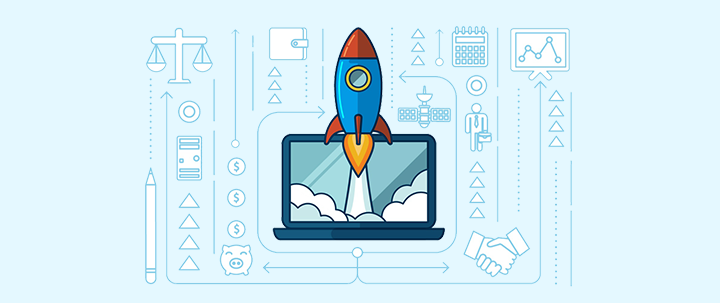

%201.png?width=559&height=559&name=close-up-women-working-with-devices%20(1)%201.png)
